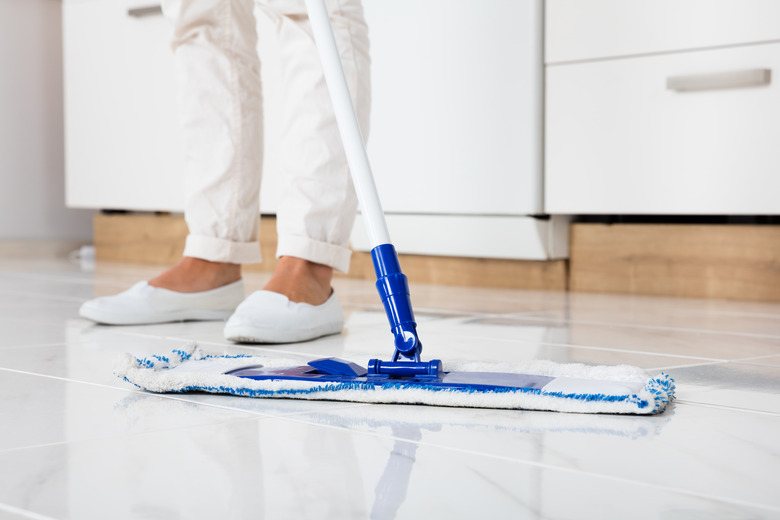How To Get Easy-Off Oven Cleaner Off Of A Linoleum Floor
If you have a linoleum floor, it's important to protect it when you use oven cleaner; the company that manufactures Easy-Off recommends doing so by covering your floor with newspaper. Failing that, you should handle spills as soon as they happen, because Easy-Off, as well as other brands of stainless steel oven cleaner, can leave a permanent stain. You may be able to minimize discoloration by using a solvent or wood bleach if you act quickly enough.
Why Easy-Off Oven Cleaner Stains
Why Easy-Off Oven Cleaner Stains
Oven cleaners usually include a solvent to dissolve the gunk that collects on oven walls, and the substance in Easy-Off is diethylene glycol butyl ether, or DGBE. This solvent is corrosive and produces brown, rust-like stains on linoleum, which is essentially hardened linseed oil and pine dust.
Easy-Off also contains sodium hydroxide, otherwise known as caustic soda, or lye, which is even more corrosive than DGBE. It can eat its way through vinyl flooring as easily as it does through linoleum. Sodium hydroxide is the main ingredient in caustic drain cleaners, which are capable of damaging plastic plumbing pipes.
Catch the Stain Quickly
Catch the Stain Quickly
The longer the chemicals stay on the linoleum floor, the more they stain it, so it's important to handle spills as soon as they happen. The manufacturer of Easy-Off recommends treating fresh spills with Zud cleanser, an oxalic acid-based household cleaning powder.
Make a paste with the powder, using a little water, and spread the paste on the oven cleaner stains. Allow it to remain there for 10 to 15 minutes; then wipe gently with wet paper towels to remove all the residue. In the absence of an oxalic-acid based cleanser, saturate the stain with water by leaving wet paper towels on it for 10 to 15 minutes; then wipe off as much as you can.
Take Tougher Measures
Take Tougher Measures
The linseed oil-based surface of linoleum is porous, and if you don't get to the oven cleaner on the floor soon enough, corrosive oven-cleaning chemicals can penetrate and cause discoloration. Once a stain occurs, you may make headway against it with an abrasive pad or a toothbrush and a commercial scouring powder; it may take several repetitions of this treatment over a period of days to make the stain go away.
You can also use baking soda as an alternative to scouring powder. To give it more cleansing action, mix it with vinegar. The combination creates a foam that works its way into the pores to combat the stains.
Help for Vinyl Floors
Help for Vinyl Floors
There is a good chance that your "linoleum" floor is actually vinyl, which is a non-porous plastic. You can tell the difference by examining the pattern, which is embossed onto the surface of vinyl but appears to permeate linoleum.
Oven cleaners don't stain vinyl as easily as they do linoleum, and you can often remove the stains that do occur with isopropyl alcohol, lighter fluid or mineral spirits. After washing away the bulk of the oven cleaner with water, rub vigorously with one of these solvents. Remember that they're all flammable, so work carefully and avoid open flames.
